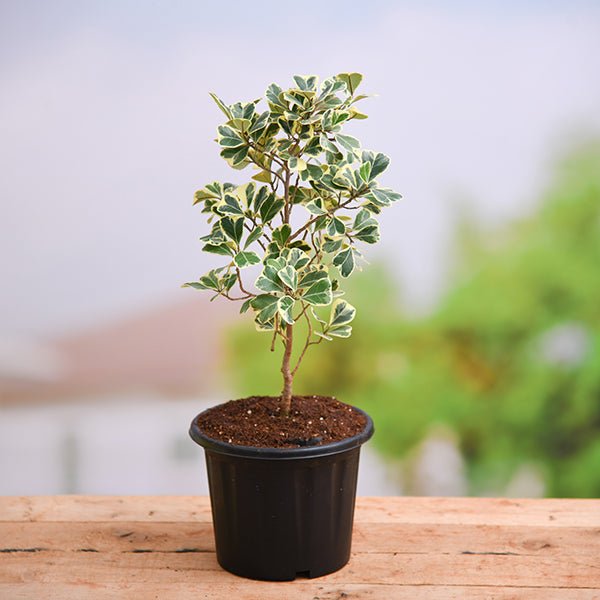
Ficus Triangularis variegata - Plant
(MRP Inclusive of all taxes)
- Shipping ₹79 for entire order
- Dispatch in 7 days
- Country of origin: India

(MRP Inclusive of all taxes)
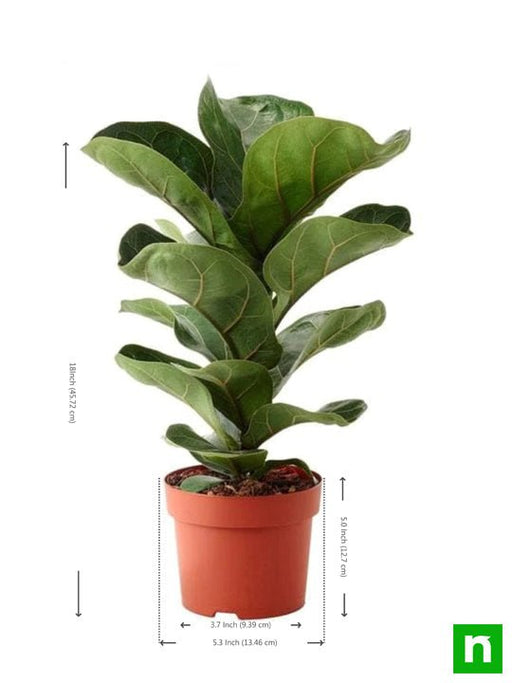
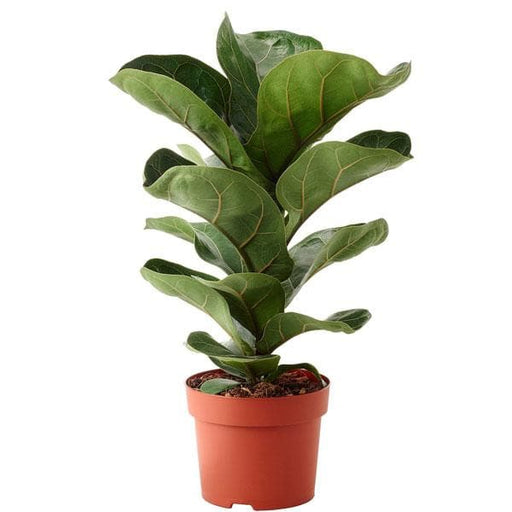 Save 19%
Save 19%
Ficus Lyrata Bambino, Dwarf Fiddle Leaf Fig - Plant The Ficus Lyrata Bambino, commonly known as the Dwarf Fiddle Leaf Fig, is a stunning h...
View full details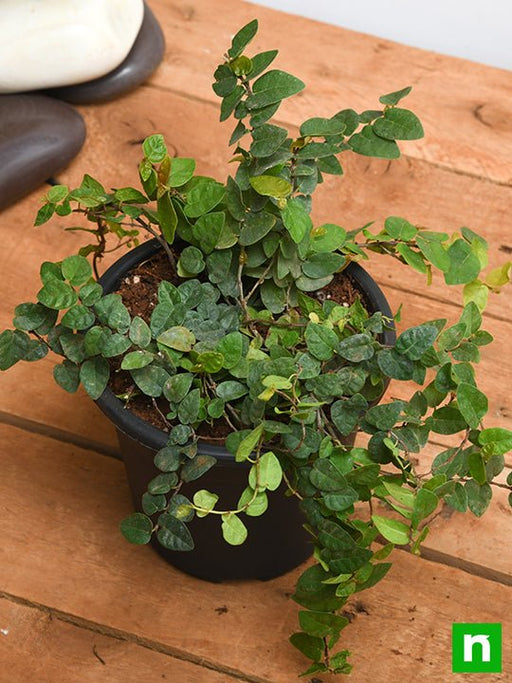
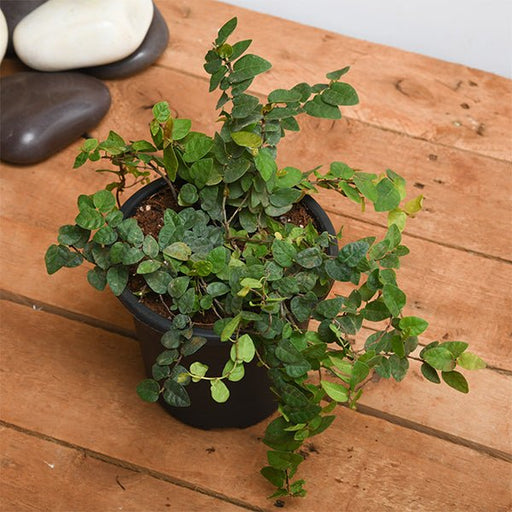 Save 26%
Save 26%
Creeping Fig Plant, Ficus pumila The Creeping Fig, scientifically known as Ficus pumila, is a versatile and resilient climbing plant nativ...
View full details
 Save up to 29%
Save up to 29%
Rubber Tree, Rubber Plant, Ficus elastica (Small) - Plant The Rubber Tree, scientifically known as Ficus elastica, is a stunning indoor plant that...
View full details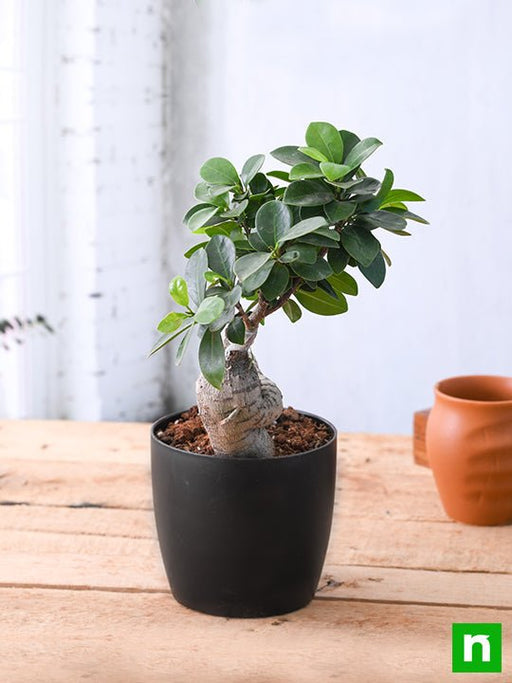
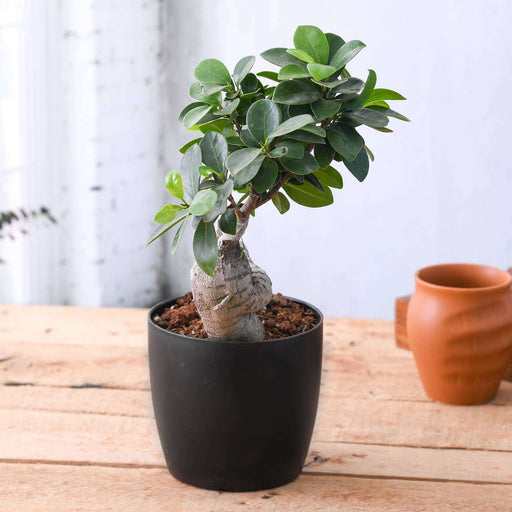 Save 16%
Save 16%
Ficus Bonsai - Plant The Ficus Bonsai is a captivating miniature tree that brings a touch of nature's elegance into your home or office. K...
View full details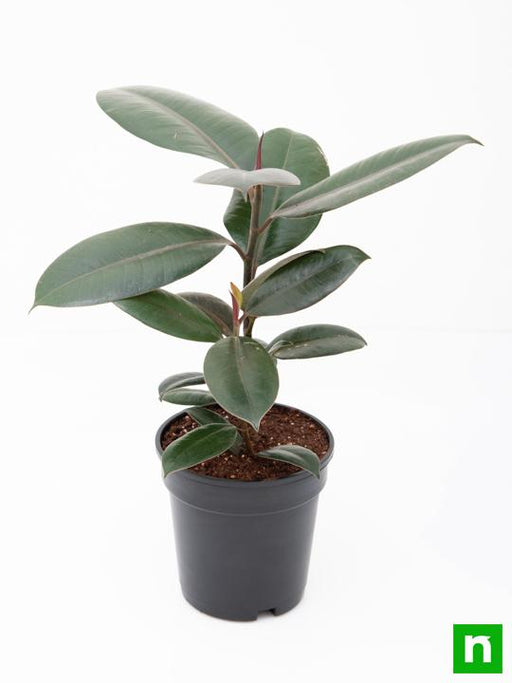
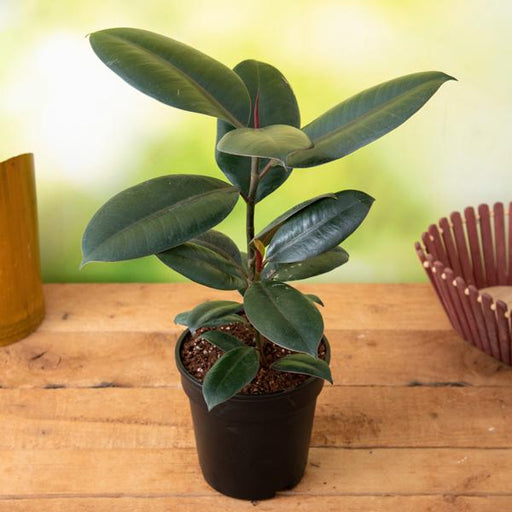 Save 17%
Save 17%
Rubber Tree, Rubber Plant, Ficus elastica The Rubber Tree, scientifically known as Ficus elastica, is a stunning indoor plant renowned for...
View full details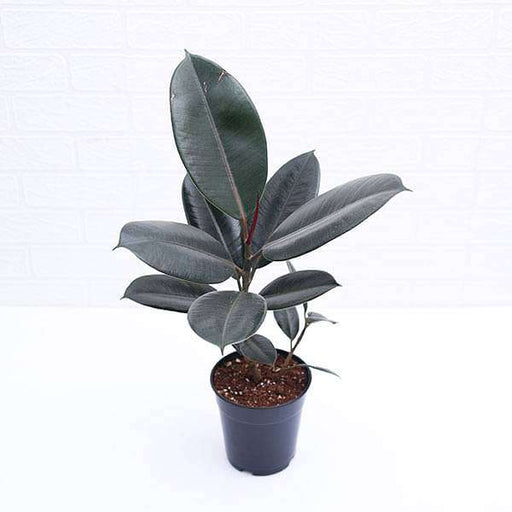
 Save 23%
Save 23%
Rubber Tree, Rubber Plant, Ficus elastica (Black Prince, Burgundy) The Rubber Tree, scientifically known as Ficus elastica, is a stunning ...
View full details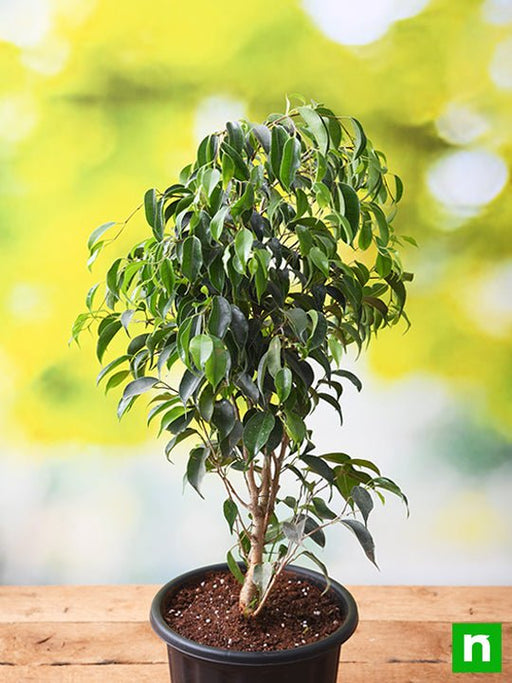
 Save 18%
Save 18%
Ficus Benjamina - Weeping Fig Plant The Ficus Benjamina, commonly known as the Weeping Fig, is a stunning indoor plant that boasts glossy,...
View full details Save 15%
Save 15%
Pack of Vermicompost and Neem Cake for House Plants Transform your indoor garden with our premium Pack of Vermicompost and Neem Cake, spec...
View full details
Pack of Plant Growth and Flower Boosters Unlock the full potential of your garden with our Pack of Plant Growth and Flower Boosters! This ...
View full details Save 38%
Save 38%
Combo of Jeevamrut and Neem Raksha for Easy Growth and Protection of Houseplants Transform your indoor garden with our exclusive combo of ...
View full details Save 22%
Save 22%
Plant Nutrients Kit (Pack of 16) for a Healthy Garden Transform your garden into a lush paradise with our Plant Nutrients Kit, featuring 1...
View full details Save 16%
Save 16%
Combo of Top Plant Fertilizers Elevate your gardening game with our exclusive Combo of Top Plant Fertilizers, featuring two bags of premiu...
View full details Save 24%
Save 24%
Pack of 4 Additives to Make Soil Healthy and Nutrient Rich Transform your garden into a thriving ecosystem with our Pack of 4 Additives de...
View full details Save 30%
Save 30%
Transform your gardening experience with our premium Combo of Perlite and Vermiculite. This unique blend is designed to enhance soil aeration and ...
View full details Save 27%
Save 27%
Combo of 2 Vermicompost and Cocopeat - Enrich Your Soil Naturally! Transform your garden into a thriving ecosystem with our Combo of 2 Ver...
View full details
 Save 35%
Save 35%
Best 6 Plants for Perfect Indoor Garden Transform your living space into a lush oasis with our curated collection of the Best 6 Plants for a...
View full details
 Save up to 50%
Save up to 50%
Mini Succulent Garden Pack Transform your space with our Mini Succulent Garden Pack, featuring a delightful collection of 4 any variety beautiful s...
View full details
 Save 30%
Save 30%
5 Best Fragrant Plants Transform your garden or indoor space into a fragrant paradise with our curated selection of the 5 Best Fragrant Plants. Th...
View full details
 Save 24%
Save 24%
Set of 2 Bonsai Looking Grafted Adeniums Transform your indoor or outdoor space with our exquisite Set of 2 Bonsai Looking Grafted Adenium...
View full details Save 45%
Save 45%
Top 4 Die Hard Succulents Pack Transform your indoor or outdoor space with our Top 4 Die Hard Succulents Pack, featuring a curated selecti...
View full details
 Save 30%
Save 30%
5 Best Indoor Plants Pack Transform your living space into a lush oasis with our '5 Best Indoor Plants Pack.' This carefully curated collection fe...
View full details
 Save 25%
Save 25%
Set of 4 Evergreen Air Purifier Plant Pack Transform your indoor space into a lush, green oasis with our Set of 4 Evergreen Air Purifier Pla...
View full details| SrNo | Item Name | Qty |
|---|---|---|
| 2 | Ficus Triangularis variegata Plant | 1 |
The Ficus Triangularis Variegata, also known as the Variegated Triangle Fig, is a stunning houseplant that captivates with its unique triangular leaves adorned with creamy white and green variegation. This tropical beauty not only enhances your indoor space but also purifies the air, making it a perfect addition to any home or office. With its striking foliage and easy-care nature, it’s no wonder this plant has become a favorite among plant enthusiasts.
This plant stands out due to its distinctive leaf shape and vibrant color contrast, which can vary from plant to plant. The Ficus Triangularis Variegata is not just visually appealing; it also has a rich history in traditional medicine, where various Ficus species have been used for their therapeutic properties. Its ability to adapt to various indoor conditions makes it a versatile choice for both novice and experienced plant lovers.
One of the most remarkable features of the Ficus Triangularis Variegata is its air-purifying qualities. Studies have shown that Ficus plants can remove toxins such as formaldehyde and benzene from the air, contributing to a healthier living environment. Additionally, its unique leaf shape and variegation make it a conversation starter, adding a touch of elegance to any room.
If you think caring for a Ficus Triangularis is as easy as pie, think again! This plant is a diva that demands attention. It thrives in bright, indirect light and prefers a well-draining potting mix. Water it when the top inch of soil feels dry, but don’t drown it—this isn’t a swimming competition! Keep an eye out for pests; they love to crash the party. With a little TLC, your Ficus will reward you with stunning variegated leaves that will make your friends green with envy.
Who knew a plant could be so beneficial? The Ficus Triangularis Variegata isn’t just a pretty face; it’s a natural air purifier! It filters out toxins and adds a splash of color to your space. Plus, it’s a conversation starter—everyone will want to know how you managed to keep such a stunning plant alive. With its unique triangular leaves, it’s like the Picasso of the plant world, bringing art and life into your home.
Ready to play plant parent? Propagating your Ficus Triangularis is like cloning your favorite celebrity—everyone wants a piece of the action! You can take cuttings and place them in water or soil, but remember, patience is key. It’s not a race; let those roots develop at their own pace. Once they’re ready, you’ll have new little Ficus friends to show off. Just be sure to give them the same love and care you shower on the original!
Let’s talk dollars and cents! The price of a Ficus Triangularis Variegata can vary like the stock market, but generally, you’re looking at a range that won’t break the bank. Depending on size and seller, you might find yourself shelling out a pretty penny for a mature specimen. But remember, investing in a plant is like investing in happiness—priceless! So, keep an eye out for deals, and don’t be afraid to splurge a little on this botanical beauty.
Size matters, especially when it comes to plants! The Ficus Triangularis Variegata can grow anywhere from a petite tabletop companion to a towering indoor tree, depending on how much you pamper it. Typically, you can expect it to reach heights of 2 to 3 feet indoors, but with the right conditions, it might just surprise you. So, whether you’re looking for a small accent or a statement piece, this plant has got you covered!
If your Ficus Triangularis Variegata could talk, it would say, “I’m not a sunbather!” This plant prefers bright, indirect light, so keep it away from harsh direct sunlight that could scorch its beautiful leaves. Think of it as a plant that enjoys a good sunlit café but prefers to sit in the shade. Too little light, and it might sulk; too much, and it could throw a tantrum. Find that sweet spot, and you’ll have a happy plant!
The right soil is like a cozy bed for your Ficus Triangularis Variegata. It craves a well-draining potting mix that allows its roots to breathe while keeping them hydrated. Think of it as a luxurious spa treatment for your plant. A mix of peat, perlite, and pine bark will do the trick. Avoid heavy soils that retain too much moisture; your Ficus isn’t a fan of soggy feet. With the right soil, your plant will thrive and show off its stunning variegation!
Ah, pests—the uninvited guests of the plant world! Your Ficus Triangularis Variegata can attract a few unwanted visitors like spider mites and mealybugs. But fear not! A little neem oil or insecticidal soap can send those pests packing. Regularly inspecting your plant will help you catch any infestations early. Remember, a healthy plant is a happy plant, and with a little vigilance, you can keep your Ficus pest-free and fabulous!
The battle of the Ficus! While the regular Ficus is a classic, the Ficus Triangularis Variegata is the trendsetter with its eye-catching leaves. Think of it as the stylish cousin who always steals the spotlight at family gatherings. The variegated version offers a unique twist with its creamy white and green foliage, making it a must-have for any plant enthusiast. So, if you’re looking to elevate your plant game, the variegata is the way to go!
Looking for the perfect indoor companion? The Ficus Triangularis Variegata is like the friend who always brings the fun! Its striking leaves add a pop of color to any room, and it’s relatively easy to care for—just don’t forget to give it some love. It thrives in indoor environments, making it ideal for homes and offices alike. Plus, it’s a great conversation starter, so get ready for compliments and questions about your fabulous green friend!
Maintenance is key to keeping your Ficus Triangularis Variegata looking its best. Regular pruning will help maintain its shape and encourage bushier growth. Dusting off those gorgeous leaves will keep them shining bright and allow the plant to photosynthesize like a champ. Don’t forget to rotate your plant occasionally to ensure even growth. With a little effort, your Ficus will be the star of the show, turning heads and making your space feel alive!
Ficus Triangularis variegata is a stunning houseplant known for its unique triangular leaves adorned with creamy white edges. It’s like the fashionista of the plant world, always turning heads with its stylish foliage. Perfect for adding a touch of elegance to your indoor jungle!
Caring for this diva involves bright, indirect light and well-draining soil. Water when the top inch of soil is dry, but don’t drown it! Think of it as a high-maintenance friend—give it attention, but don’t smother it, or it might just sulk!
Sadly, this plant is not a pet’s best friend. Ficus Triangularis variegata contains latex, which can be toxic to furry companions. So, if you have a curious cat or a nosy dog, keep this beauty out of their reach to avoid any unfortunate snacking incidents!
Water your Ficus Triangularis variegata when the top inch of soil feels dry. Think of it as a thirsty friend—don’t let it go parched for too long, but also don’t drown it in a pool party! A good rule of thumb is every 1-2 weeks, depending on humidity.
This plant prefers a well-draining potting mix, ideally one that retains some moisture without turning into a swamp. A blend of potting soil, perlite, and orchid bark is like a five-star buffet for your Ficus, ensuring it gets the nutrients it craves!
Yes, this plant loves a good meal! Feed it with a balanced liquid fertilizer every 4-6 weeks during the growing season. Just remember, too much of a good thing can lead to a plant party gone wrong—so don’t overdo it!
While it dreams of basking in the sun, Ficus Triangularis variegata is best suited for indoor living in most climates. If you live in a warm, humid area, it might enjoy a summer vacation outdoors, but be sure to bring it back inside before the cold sets in!
Keep an eye out for pesky pests like spider mites and mealybugs. They’re like uninvited guests at a party—annoying and hard to get rid of! Regularly inspect your plant and treat any infestations promptly to keep your Ficus looking fabulous.
Propagation is like matchmaking for plants! Take a cutting with a few leaves, let it callus for a day, then place it in water or soil. With a little patience and love, you’ll have new Ficus friends sprouting in no time, ready to join your indoor garden!
This plant prefers a cozy environment, thriving in temperatures between 60°F to 75°F. It’s not a fan of extreme cold or heat, so keep it away from drafty windows and hot radiators. Think of it as your picky roommate—comfortable and happy in the right conditions!
Ficus Triangularis variegata is a moderate grower, adding a few inches each year if given the right care. It’s not a speedster, but with proper light and water, it’ll gradually fill your space with its chic foliage. Patience is key—good things come to those who wait!